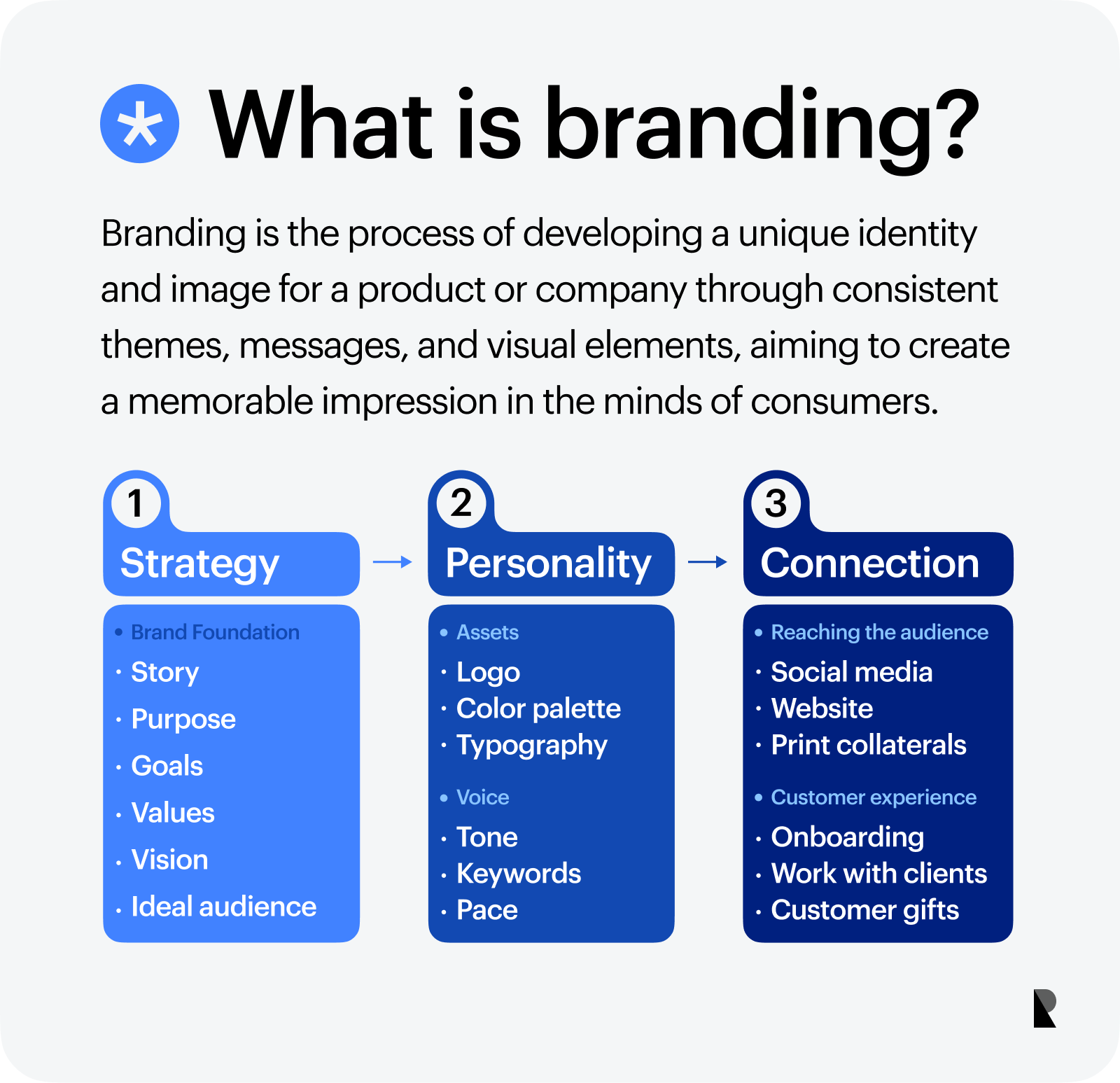Structure Durable Branding for Long-Term Organization Success
In the contemporary business landscape, establishing a durable branding technique is paramount for making sure lasting success. A natural brand identification not just sets apart a business from its competitors but also cultivates trust fund and commitment amongst consumers. Essential aspects such as a well-designed logo, constant messaging, and effective interaction across electronic platforms play critical roles in this procedure. The challenge exists in successfully measuring the impact of these branding initiatives to grow and adapt in an ever-evolving market. What methods can services use to not just create a memorable brand name yet additionally sustain its relevance gradually?
Recognizing Brand Name Identity
Brand identification serves as the foundation of a company's image and online reputation, encompassing components such as logo layout, shade typography, messaging, and scheme. Each part plays a vital role in creating a cohesive and identifiable brand name that reverberates with its target audience. A well-designed logo design serves as a visual depiction of the brand name's worths and objective, while a carefully selected color palette evokes particular feelings and associations.
Typography likewise adds dramatically to brand identification; the option of typeface can affect perceptions of imagination, professionalism and trust, or dependability. Uniformity in these components promotes experience, permitting customers to swiftly determine and connect with the brand in numerous contexts.
Additionally, messaging is just as crucial, as it connects the brand name's core values and differentiators. Clear and engaging messaging aids develop a strong narrative that engages consumers and develops trust fund.
Ultimately, a well-defined brand identity not only boosts presence but additionally cultivates commitment among consumers. By investing time and sources into establishing a robust brand name identification, services can produce a lasting perception that sustains lasting growth and success.
Value of Uniformity
Maintaining uniformity throughout all brand name elements is crucial for reinforcing recognition and depend on amongst customers. A cohesive brand name identity-- incorporating logo design, color messaging, typography, and combination-- produces a unified experience that customers can quickly recognize. When these aspects are continually applied across different platforms, from marketing materials to social media, they strengthen the brand's presence and make it a lot more memorable.
Irregular branding can result in confusion and thin down brand equity. When consumers come across variants in brand name discussion, it questions concerning integrity and credibility. This inconsistency can wear down trust, making it less likely that clients will select your brand over competitors
In addition, regular branding cultivates customer commitment. When customers recognize what to get out of a brand name, they are more likely to form an emotional link, bring about repeat acquisitions and long-term relationships.
To accomplish uniformity, organizations must establish extensive brand standards that describe the appropriate use all brand name elements. Routine training for staff members and periodic audits of marketing materials can assist ensure adherence to these guidelines, inevitably leading the way for sustained business success through a strong and trustworthy brand picture.

Crafting a Customer-Centric Experience
Producing a customer-centric experience is important for businesses intending to promote strong relationships with their customers. This approach prioritizes understanding and satisfying the requirements, preferences, and assumptions of consumers at every touchpoint. By actively paying attention to consumer responses and carrying out extensive marketing research, businesses can customize their services and offerings to align extra closely with what their target audience needs.
Central to crafting a customer-centric experience is the personalization of interactions. Robust Branding. Making use of information analytics enables business to segment their customer base and deliver personalized advertising messages, services, and items. This not just boosts client satisfaction yet also drives commitment and encourages repeat business
Moreover, effective communication plays a pivotal function in a customer-centric technique. Transparent and open discussion cultivates trust fund and reinforces the bond in between the organization and its customers. Businesses should make certain that their customer support groups are trained, about his compassionate, and receptive, offering support that mirrors an understanding of specific customer trips.
Leveraging Digital Operating Systems
In today's electronic age, services need to use the huge potential of on the internet systems to improve their branding efforts and get in touch with clients. These platforms, that include social media, internet sites, and e-commerce networks, give unique chances for brands to engage with their target market in real-time, fostering a sense of area and commitment.
Social network systems such as Facebook, Instagram, and Twitter make it possible for brand names to share their tales, values, and items while enabling direct communication with consumers. This two-way interaction not only humanizes the brand yet additionally assists organizations gather useful understandings right into client choices and problems. Additionally, a strong on-line presence can enhance brand exposure and draw in new consumers through organic reach and targeted marketing.
Additionally, having a well-designed internet site works as a central center for brand details, showcasing product or services while offering a smooth customer experience. Shopping capacities even more help with straight sales, ensuring a convenient buying experience for customers. By efficiently leveraging these digital platforms, services can build a durable brand name identity that reverberates with their target market, eventually contributing to lasting success and development.
Measuring Brand Success
Determining brand success is important for businesses aiming to evaluate the effectiveness of their branding strategies and efforts. This assessment allows companies to comprehend how well their brand name visit this website resonates with target market and drives organization objectives. Key performance indications (KPIs) such as brand understanding, customer interaction, and commitment are vital metrics to consider.
Brand name recognition can be determined via surveys, social media sites reach, and internet site traffic analytics. High degrees of recognition indicate that consumers recall the brand name and acknowledge, which is foundational for future purchasing choices. Customer interaction metrics, such as social networks interactions and email open rates, supply understanding right into how actively consumers are getting involved with the brand.
Furthermore, loyalty can be analyzed via metrics like Internet Marketer Score (NPS) and repeat purchase rates. These indications disclose not only customer fulfillment yet also the likelihood of consumers recommending the brand name to others.
Conclusion
A natural brand name identity, defined by a memorable logo, regular shade combination, and thoughtful typography, cultivates customer acknowledgment and trust. Gauging brand success with key efficiency indicators straightens methods with market needs, ultimately driving continual development and durability in a competitive landscape.
A cohesive brand identity not only sets apart a business from its competitors yet likewise grows trust and loyalty among clients - Robust try here Branding. What techniques can services employ to not just produce a memorable brand however likewise endure its relevance over time?
By properly leveraging these electronic systems, businesses can construct a robust brand identity that reverberates with their target audience, eventually contributing to long-term success and development.
